- Home
- Ellen Datlow
Haunted Nights
Haunted Nights Read online
ALSO EDITED BY ELLEN DATLOW
After (with Terri Windling)
Alien Sex
The Beastly Bride: Tales of the Animal People (with Terri Windling)
The Best Horror of the Year, Volumes 1–9
Black Feathers
Black Heart, Ivory Bones (with Terri Windling)
Black Swan, White Raven (with Terri Windling)
Black Thorn, White Rose (with Terri Windling)
Blood Is Not Enough: 17 Stories of Vampirism
Blood and Other Cravings
Children of Lovecraft
The Coyote Road: Trickster Tales (with Terri Windling)
The Cutting Room: Dark Reflections of the Silver Screen
The Dark: New Ghost Stories
Darkness: Two Decades of Modern Horror
The Del Rey Book of Science Fiction and Fantasy
Digital Domains: A Decade of Science Fiction and Fantasy
The Doll Collection
The Faery Reel: Tales from the Twilight Realm (with Terri Windling)
Fearful Symmetries
The Green Man: Tales from the Mythic Forest (with Terri Windling)
Haunted Legends (with Nick Mamatas)
Hauntings
Inferno: New Tales of Terror and the Supernatural
Lethal Kisses
Little Deaths
Lovecraft Unbound
Lovecraft’s Monsters
The Monstrous
Naked City: Tales of Urban Fantasy
Nebula Awards Showcase 2009
Nightmare Carnival
Off Limits: Tales of Alien Sex
Omni Best Science Fiction, Volumes 1–3
Omni Book of Science Fiction, Volumes 1–7
Omni Visions, Volumes 1 and 2
Poe: 19 New Tales Inspired by Edgar Allan Poe
Queen Victoria’s Book of Spells (with Terri Windling)
Ruby Slippers, Golden Tears (with Terri Windling)
Salon Fantastique: Fifteen Original Tales of Fantasy (with Terri Windling)
Silver Birch, Blood Moon (with Terri Windling)
Sirens and Other Daemon Lovers (with Terri Windling)
Snow White, Blood Red (with Terri Windling)
Supernatural Noir
Swan Sister (with Terri Windling)
Tails of Wonder and Imagination: Cat Stories
Teeth: Vampire Tales (with Terri Windling)
Telling Tales: The Clarion West 30th Anniversary Anthology
Troll’s-Eye View: A Book of Villainous Tales (with Terri Windling)
Twists of the Tale
Vanishing Acts
A Whisper of Blood
A Wolf at the Door (with Terri Windling)
The Year’s Best Fantasy and Horror, Volumes 1–21 (with Terri Windling, Gavin J. Grant, and Kelly Link)
ALSO BY LISA MORTON
By Insanity of Reason (with John R. Little)
The Castle of Los Angeles
Cemetery Dance Select: Lisa Morton
The Devil’s Birthday
The Free Way
Hell Manor
The Lucid Dreaming
Malediction
Midnight Walk (as editor)
Monsters of L.A.
Netherworld
The Samhanach
Smog
Summer’s End
Wild Girls
Zombie Apocalypse!: Washington Deceased
Nonfiction Books
The Cinema of Tsui Hark
Ghosts: A Haunted History
A Hallowe’en Anthology: Literary and Historical Sources Over the Centuries
The Halloween Encyclopedia
Savage Detours: The Life and Work of Ann Savage (with Kent Adamson)
Trick or Treat: A History of Halloween
Witch Hunts: A Graphic History of the Burning Times (with Rocky Wood and Greg Chapman)
A BLUMHOUSE BOOKS/ANCHOR BOOKS ORIGINAL, 2017
Copyright © 2017 by Horror Writers Association
Introduction copyright © 2017 by Lisa Morton
All rights reserved. Published in the United States by Anchor Books, a division of Penguin Random House LLC, New York, and distributed in Canada by Random House of Canada, a division of Penguin Random House Canada Limited, Toronto.
Anchor Books and colophon are registered trademarks of Penguin Random House LLC.
Blumhouse and colophon are trademarks of Blumhouse Productions, LLC.
This is a work of fiction. Names, characters, places, and incidents either are the product of the authors’ imaginations or are used fictitiously. Any resemblance to actual persons, living or dead, events, or locales is entirely coincidental.
This page constitutes an extension of this copyright page.
Library of Congress Cataloging-in-Publication Data
Names: Datlow, Ellen. | Morton, Lisa, 1958– editor.
Title: Haunted Nights : a Horror Writers Association anthology / edited by Ellen Datlow and Lisa Morton.
Description: First edition. | New York : Anchor, 2017.
Identifiers: LCCN 2017001402 (print) | LCCN 2017020359 (ebook) | ISBN 9781101973837 (paperback) | ISBN 9781101973844 (ebook)
Subjects: LCSH: Halloween—Fiction. | Horror tales, American. | BISAC: FICTION / Horror. | FICTION / Anthologies (multiple authors). | FICTION / Occult & Supernatural.
Classification: LCC PS648.H22 H366 2017 (print) | LCC PS648.H22 (ebook) | DDC 813/.0873808—dc23
LC record available at https://lccn.loc.gov/2017001402
Anchor Books Trade Paperback ISBN 9781101973837
Ebook ISBN 9781101973844
Cover design: Cardon Webb
Cover photograph © Robert Estall photo agency/Alamy Stock Photo. Used with permission from Donald Macer-Wright
www.anchorbooks.com
v4.1
ep
Contents
Cover
Also Edited by Ellen Datlow
Title Page
Copyright
Introduction by Lisa Morton
With Graveyard Weeds and Wolfsbane Seeds
Seanan McGuire
Dirtmouth
Stephen Graham Jones
A Small Taste of the Old Country
Jonathan Maberry
Wick’s End
Joanna Parypinski
The Seventeen-Year Itch
Garth Nix
A Flicker of Light on Devil’s Night
Kate Jonez
Witch Hazel
Jeffrey Ford
Nos Galan Gaeaf
Kelley Armstrong
We’re Never Inviting Amber Again
S. P. Miskowski
Sisters
Brian Evenson
All Through the Night
Elise Forier Edie
A Kingdom of Sugar Skulls and Marigolds
Eric J. Guignard
The Turn
Paul Kane
Jack
Pat Cadigan
Lost in the Dark
John Langan
The First Lunar Halloween
John R. Little
About the Authors
About the Editors
Permissions
Introduction
Lisa Morton
WHEN WE THINK of Halloween—especially if we’re Americans, where the holiday was really (re-)created in its modern, still-recognizable form—we probably go first to memories of costumes and masks, trick or treat, jack-o’-lanterns and haunted houses, horror movies on television, and autumn in the air. Those of us who persist in revering the printed word may revisit beloved books like Ray Bradbury’s The Halloween Tree, Norman Partridge’s Dark Harvest, or Washington Irving’s “The Legend of Sleepy Hollow” (contrary to popular belief, that classic work never actua
lly mentions Halloween). The more knowledgeable among us might know of Robert Burns’s 1785 poem “Hallowe’en,” a lovely and playful description of a Scottish celebration at which (mostly) young people engage in fortune-telling games, even going so far as to call on the devil in their various efforts to divine the future.
But the first literary mentions of Halloween precede Burns by two centuries; they describe a holiday drenched in deliciously spooky superstition. Take, for example, these two lines from Alexander Montgomerie’s 1584 poem “Flyting Against Polwart”:
In the hinder end of harvest, on Allhallow even,
When our good neighbors do ride…
Montgomerie goes on to describe those “good neighbors” in more detail, and he could easily be ticking off the characters in any modern haunted attraction: there are the King of Faerie and the Elf Queen, “many elrich Incubus,” witches (“the Weird Sisters”), ghosts, spiders, owls, ravens, and werewolves. The fact that “Flyting Against Polwart” is actually a satirical attack on one of Montgomerie’s rivals doesn’t lessen the strange and whimsical portrait it paints of Halloween night.
Looking back further into the past, we find that Halloween’s ancestor, the Celtic New Year’s festival Samhain, probably gave birth to the holiday’s macabre side (although some scholars believe that the Catholic All Saints’ Day, on November 1, and All Souls’ Day, on November 2, were more responsible for Halloween’s obsessions with death, spirits, and all things hellish). We really know very little about how the Celts honored Samhain—they kept no written records, and so we have nothing more than the reports of early Christian missionaries and scant archaeological evidence to rely on—but it does seem to have been a night of mystery and power for them. As the time when an old Celtic year gave way to a new one, it was also a time when the border between our world and the next was thin enough to allow both dead spirits and malevolent sidh, or fairies, to cross over. The Celtic legends are packed with fearful doings on Samhain: female werewolves that lay waste to flocks of sheep, corpses that return to life and speak, sidh warriors who venture out of the otherworld to burn down palaces, and humans who cross into the otherworld and spend whole lifetimes in a single year. These stories were passed down through the centuries, eventually becoming Irish and Scottish folktales about men who were lured by fairies into dancing themselves to death, encounters with hordes of ghosts, and deals with diabolical tricksters.
Samhain may have provided Halloween with the raw grist for its dark mill, the Irish and Scots may have kept it alive through the centuries (while the British condemned it as a relic of a religion they no longer accepted), but it really took the Americans to produce the Halloween we know today. When the Irish fled famine in the mid-nineteenth century and brought their celebrations with them, they found an American upper-middle class hungry for ways to party. The explosive growth of magazines introduced American matrons to the quaint October festival, with its games and costuming and glimpses into the world beyond. The New World provided a native squash called the pumpkin, which proved perfect for carving ghoulish faces into (in their native land, Irish pranksters had been content to light up turnips), and by the twentieth century, manufacturing companies had found ways to profit from candy, costumes, and decorations.
Now, in the twenty-first century, Halloween has overcome religious objections, emigration, destructive pranking (at the height of the Great Depression), unfounded urban legends of poisoned candy and razor blades in apples, co-opting by counterculture groups, acts of terrorism, and (in a curious full circle) religious objections to not merely survive, but thrive. It has overtaken other holidays in sales of sweets and booze, its influence has spilled into areas of pop culture as diverse as tattooing and “escape rooms,” and Halloween literature has experienced a renaissance.
The stories in Haunted Nights showcase why Halloween is such an effective theme in fiction. Halloween, with its roots in a night that lifts the veil between our world and the next, is broad enough to hold horror tropes like ghosts, witches, and shape-shifters, but it also has its own specific icons, like “Stingy Jack,” the blacksmith who outwits the devil but is finally forced to wander the earth forever with his way lit only by a glowing hell ember carried in a carved pumpkin (or turnip), the jack-o’-lantern, in other words. Halloween’s universal appeal—we are all interested in death, aren’t we?—makes it work in both isolated, rural settings and densely packed urban locales. It has a rich history and seems poised to extend into a long and interesting future. And it has given rise to related holidays—Devil’s Night, held on October 30, the night to which pranking was banished; All Souls’ Day, when souls trapped in purgatory can receive our offerings; the Welsh Nos Galan Gaeaf, with its bonfires and particularly vicious fortune-telling games; and Dia de los Muertos, which merges Catholicism’s somber devotions to the dead with the far more colorful celebrations of Mesoamerica’s Aztec and Mayan peoples. There are stories here about witches and fairies, the devil and his foe Jack, madness and art and revenge and birth and death and veils between worlds.
I think the Celts would have recognized these stories, traded them around a Samhain fire, and shivered in delight at them. When you read them, I hope you’ll think of the grand, millennia-old tradition you’re participating in.
Happy Halloween.
With Graveyard Weeds and Wolfsbane Seeds
Seanan McGuire
“IT’S HALLOWEEN,” Mary told Cook while Cook boiled caramel and dipped apples and laid them on the table to dry, buttery and glistening in their new candy shells. Cook smiled indulgently and gave Mary a ball of caramel to play between her fingers and shooed her out of the kitchen.
“It’s Halloween,” Mary told Mr. Evans the gardener while he stuffed old clothes with hay and sticks and raised his new-formed scarecrows onto their stands, propping them around the grounds like watchful sentinels. Mr. Evans smiled, not quite as indulgently as Cook, and gave Mary a stick and some string to tie around it and shooed her out of the garden.
“It’s Halloween,” Mary told Mr. Blake the coachman while he oiled the hinges on the front gate so they would creak like such and not like so when the trick-or-treaters came to call. Mr. Blake smiled coolly and gave Mary an old horseshoe, heavy and red with streaks of rust like drying blood, and shooed her away from the gate, back toward the house.
“It’s Halloween,” Mary told herself, caramel and rust streaking her fingers, the stick shoved lengthwise into her hair so her ponytail held it in place, high and bobbing bright in the autumn wind. Atop the house, crows cawed their delighted caws into the air, and a curtain swayed, pulled aside and let go by an unseen hand. Delighted with herself, with the world around her, Mary tucked the horseshoe into her pocket and raced on.
—
GROWING UP IN the shadow of the Holston house means growing up understanding why people believe in ghosts.
Believing in the ghosts yourself is optional, which is a good thing, because screw that: nobody’s going to convince me that some peeping Casper is hanging around to watch me get my titties out at the end of the school day. Dead is dead. Dead moves on. But the Holston house…it makes you understand why people would believe. Why they might even want to believe.
It should have fallen down a long damn time ago, for one thing. It’s older than any other house in town, built when this was nothing but pastoral fields, evergreen woods, and horse farms for rich people. The Holstons had a butt-load of money by old-timey standards, and to hear people who knew them before they died out, it was a lot of money by modern standards, too. The kind of money that sees a pretty field and says “I should build a giant-ass mansion there for no good reason, just because I want to.”
I shouldn’t be too hard on them, dead old rich people that they are. This town exists because they built here—in case the name wasn’t clue enough. Holston, Oregon: A Nice Place to Live. The motto’s not wrong. It’s nice here. No crime, no drugs, nothing beyond a little teenage mischief that never seems to outlast high school. It’
s so nice it makes me sick sometimes, like it doesn’t leave room for anything else. Guess old man Holston got what he wished for when he chose that motto. It’s the rest of us who didn’t have a choice.
When rich people decide they need to build a house, they also decide they need to buy food, and clothes, and entertainment, and all sorts of other good things that make a house a home. So people followed them, one after the other, and then those people built shops to sell their shit out of, and they built houses to keep their shit in, and eventually they turned around and went “shit, I guess I live here now.” And the Holstons loomed above it all in their ridiculous nightmare house, with its black iron grillwork and its redbrick facades, and when they started dying, everyone sort of shrugged and figured they’d brought it on themselves, what with building a house that looked like it belonged in a gothic romance.
The last member of the family died long before I was born, but I still know them. Everyone knows them. You can’t grow up here and not know them, because dying wasn’t enough to make them leave. See, they died too fast, some sort of disease that started with the youngest daughter and swept through the rest of them like a wildfire. They didn’t change their wills, and they didn’t dissolve the trusts that were supposed to make sure that hard times for any specific member of the family wouldn’t deprive the rest of them of their precious ancestral home.
No one can buy it. No one can sell it. No one can demolish it. When it falls down—which it will, someday; everything falls down someday—we’ll be able to clear the land and reclaim it for city use, but so far, the annual inspections have failed to find anything, not even water subsidence in the foundation. The place is in perfect shape, especially when you consider that it’s been standing empty and unattended for seventy years. Deer crop the grass so short that it looks mowed. Rain washes the windows, and wind blows the debris out of the gutters.

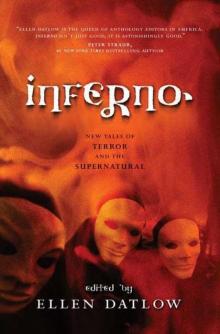 Inferno
Inferno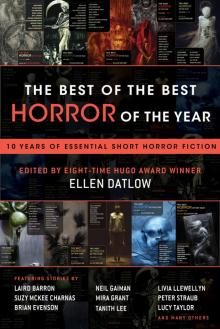 The Best of the Best Horror of the Year
The Best of the Best Horror of the Year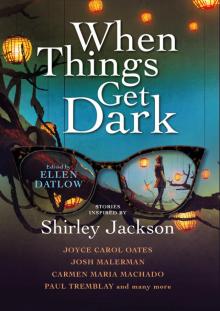 When Things Get Dark
When Things Get Dark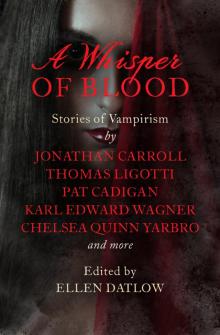 A Whisper of Blood
A Whisper of Blood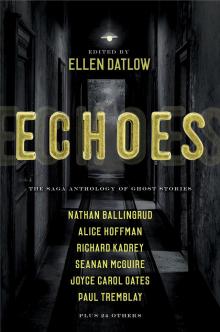 Echoes
Echoes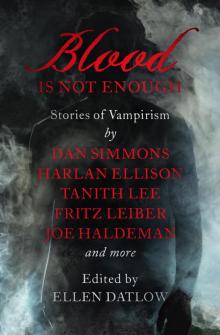 Blood Is Not Enough
Blood Is Not Enough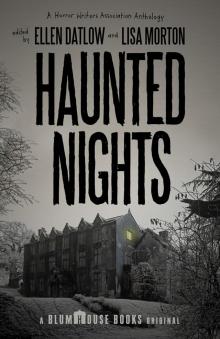 Haunted Nights
Haunted Nights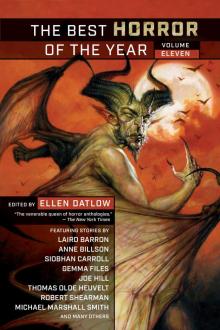 The Best Horror of the Year Volume Eleven
The Best Horror of the Year Volume Eleven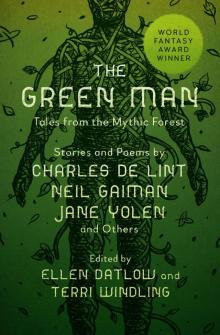 The Green Man
The Green Man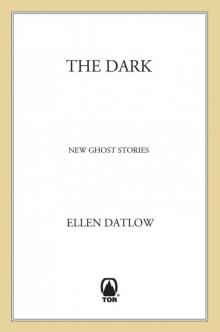 The Dark
The Dark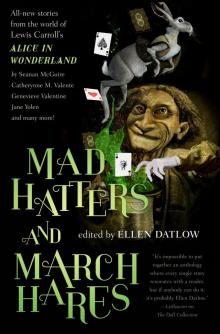 Mad Hatters and March Hares
Mad Hatters and March Hares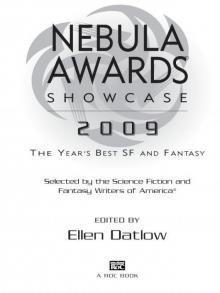 Nebula Awards Showcase 2009
Nebula Awards Showcase 2009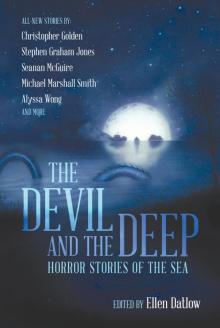 The Devil and the Deep
The Devil and the Deep